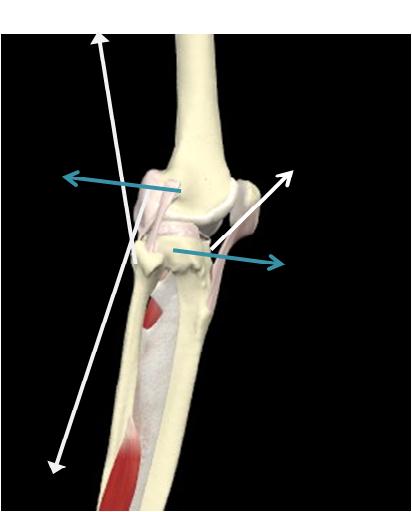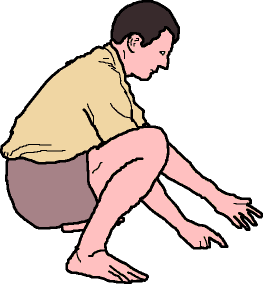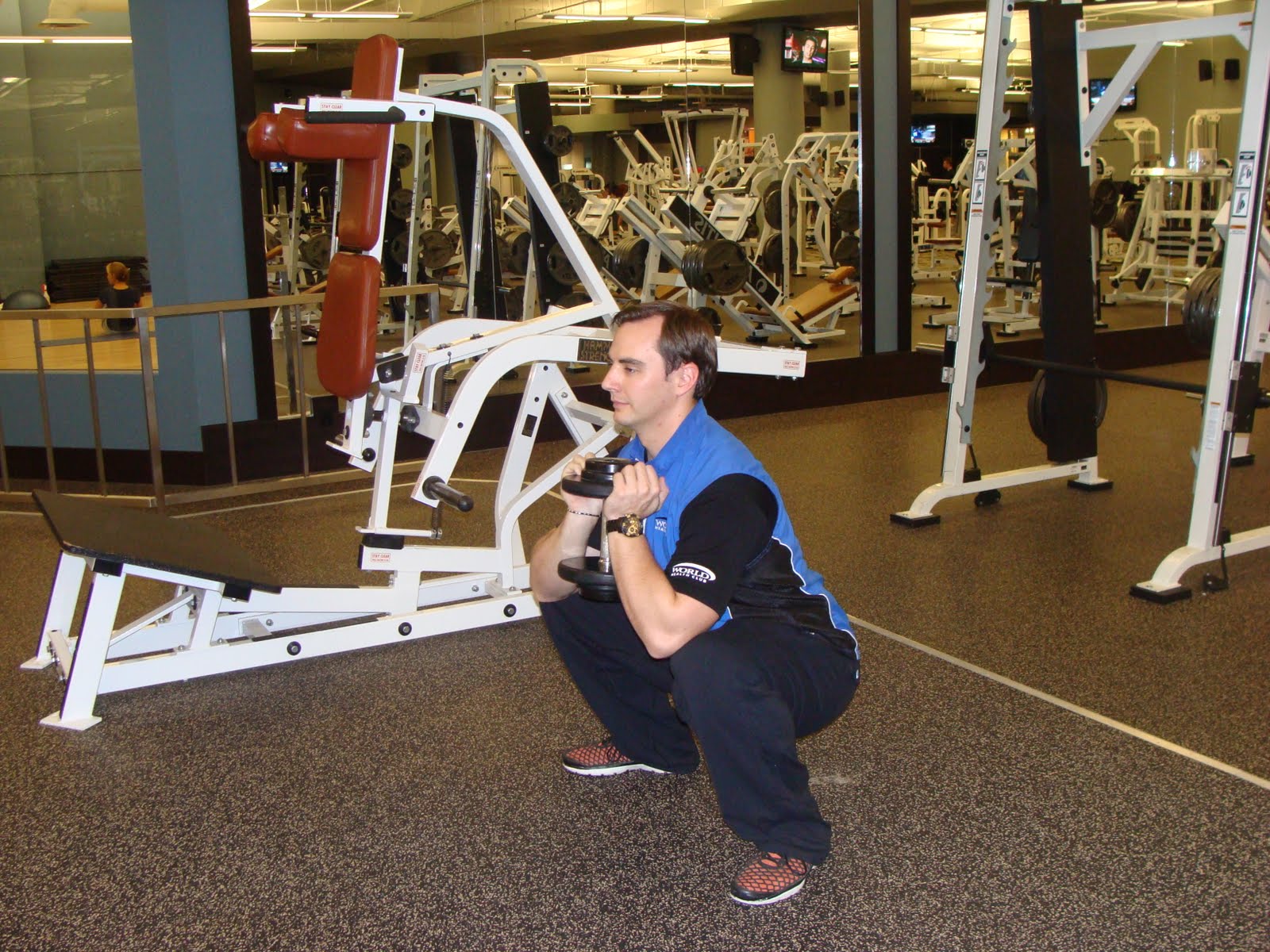Posted September 10, 2010
Why your knees should ALWAYS go past your toes when you squat!!
So the last time I taught a course of squat mechanics and techniques for power and strength development, as well as for rehabilitation of various injuries, one of the trainers in the room almost shrieked when I squatted right to the floor. Not because I have fantastic flexibility and movement patterns. No no, it was because my knees went slightly in front of my toes, which in her mind automatically pre-disposed me to a lifetime of knee injuries and problems. Her thought was one that is apparently shared by a large segment of the trainer population, not because of any hard research backing up the claim, but essentially from the old “well, that’s what I was taught,” thought process. So today I’m going to show why when you squat, we have to try to put down the blankie, stop sucking our thumbs, pull up our big-boy pants, and actually let the knee slide out past the toes.
In a previous post on why it’s evil to squat through the heels, I went over the anatomy of the foot and ankle, as well as the rationale for not shifting your weight back in your foot to develop a strong squat. Here, we’re going to spend some time thinking about the mechanics of the knee joint, and how letting the knee go past the toe can actually increase your squat strength dramatically.

The knee has 3 main groups of muscles attached to it, the hamstrings and calves in the back, and the quadriceps in the front. These muscles form a contractile net around the knee joint that help to balance force distribution and keep the femur on top of the tibia during flexion and extension movements. The femur’s main job is to roll on top of the tibia to produce movement, however if the joint is lax or weak, we can get the femur gliding on the tibia, where it begins to move forward and backward, effecting the mechanics of the joints. When this happens the meniscus gets put under excessive pressure, and we can usually see some sort of damage being done. The hamstrings attach below the femur on the upper part of the tibia and fibula, and pull the tibia into the femur and back. The calves consist of the gastrocnemius (the big boy on top) and the soleus (the little one on the bottom. I know, it kind of sounds like prison, but just go with it). They both attach at the achilles tendon, and pull the heel into plantar flexion. The soleus attaches on the upper part of the tibia, and also pulls the tibia backwards when it contracts. The gastrocnemius, however, attaches above the knee on the femur and pulls it backwards on the tibia, essentially making sure the two bones are pulling evenly on each other and getting some nice juicy roll instead of some awkward glide. The quadriceps attach to the tibia in the front and pull up and forward. Someones gotta pull forward, so why not the quads?
One thing they don’t teach you in anatomy class is what happens when a muscle contracts when you’re actually standing and under the effect of gravity. What happens when you contract the calves during the bottom phase of the squat? For those of you who said the heels lifts up, please lower your head and give it a shake. The knee gets pulled backwards as the ankle goes through plantar flexion!! What does this mean for squatting? Let’s say you don’t get a decent stretch activation out of the calves while performing a squat: the only muscle that will be helping to keep the tibia from shearing forward in counter balance to the quadriceps is the hamstrings, and it’s tied up with trying to extend the hip as well, so it’s not gonna answer the call. If the calves don’t get a chance to pull the tibia back and pull the femur back and down during knee extension, all the force will be coming from the quads reefing forward on the tibia, and will probably result in some of that ugly glide we were talking about.
A study published in the
Journal of Strength & Conditioning Research in 2003 found that letting the knee come forward did result in greater torque on the knee joint, but way less torque on the hips and low back than when restricting the movement. They also found a lot more movement through internal rotation of the knee and ankle during a restricted movement.
Now the first thing most people will do when they squat while trying to keep their knee behind their toes is either to round their back so as to get their center of gravity over their mid foot, or fall on their butt, or stick their butt waaaaay out there and not get down into a good, deep, ground scraping squat. When we flex the spine like this guy over here, we open up the vertebra and pressurize the discs into pushing backward. If we add some weight to it, that’s a recipe that leads up to a tasty disc herniation.
When did this become common!!!?!?!? What self-respecting tribal leader from the past said to all his tribesmen “hey, watch how you’re squatting down now. Don’t want to pull a hammie.”
No, they didn’t. They just simply squatted down int he manner that was the most natural, which involved their calves hitting their hamstrings, and having co-contraction to stabilize their knees from gliding and causing damage to their ACL, all by design. Those tribesmen were pretty
smart, after all. They made pyramids.
Ever watch a toddler squat when they are trying to pick something up or play on the ground? They have amazing squats, because they haven’t developed all the bad habits adults have, or spent the majority of their lives sitting and developing
Muscle Imbalances all over the place. They. Just. Squat.
Now for the more hardcore fans out there who say “Well, I’m not a toddler, and I’m not a tribesman, I just wanna know how to squat heavy and lift some pretty cool amounts of weight, and everyone who tells me about squatting says they keep their knees behind their toes.” Well, once again they are wrong.
Check out a pretty strong guy in the Olympics squatting a few hundred pounds like it’s nothing.
What?
Seriously?
That’s not a guy?? umm, okay, I want to see the blood tests on that one. And not because I think there’s steroids involved.
And now for the catch 22: It’s perfectly fine to let the knee come in front of the toes during the squat, AS LONG AS the heel stays planted on the ground, and the body weight is balanced over the natural center of gravity just ahead of the heel bone. In other words, don’t push through your heel, don’t get up on your toes, and let your knee come forward, and you can maybe have a pretty looking squat like this sexy looking guy over here.
I’ve worked with dozens of clients with degenerative knee joints, post-surgical clients, and sub-acute non-surgical clients with knee injuries, and every single one of them learns how to squat properly. I have never had a client develop a knee injury when squatting this way, and have helped to increase the strength, stability and muscle development of all of these clients. I’m helping a friend who lives in Vancouver get ready for a body building contest by critiquing videos he sends me. After getting him to stop squatting through his heels, get deeper into his squats, and let his knees come forward, the videos have gone from poorly squatting three plates a side to 4 plates in a matter of a few weeks. If you want to increase your squat, start changing your approach and let your knees come forward a few inches. You might like the results.
[gravityform id="3" name="Blog Post Capture. " title="false"]
 The knee has 3 main groups of muscles attached to it, the hamstrings and calves in the back, and the quadriceps in the front. These muscles form a contractile net around the knee joint that help to balance force distribution and keep the femur on top of the tibia during flexion and extension movements. The femur’s main job is to roll on top of the tibia to produce movement, however if the joint is lax or weak, we can get the femur gliding on the tibia, where it begins to move forward and backward, effecting the mechanics of the joints. When this happens the meniscus gets put under excessive pressure, and we can usually see some sort of damage being done. The hamstrings attach below the femur on the upper part of the tibia and fibula, and pull the tibia into the femur and back. The calves consist of the gastrocnemius (the big boy on top) and the soleus (the little one on the bottom. I know, it kind of sounds like prison, but just go with it). They both attach at the achilles tendon, and pull the heel into plantar flexion. The soleus attaches on the upper part of the tibia, and also pulls the tibia backwards when it contracts. The gastrocnemius, however, attaches above the knee on the femur and pulls it backwards on the tibia, essentially making sure the two bones are pulling evenly on each other and getting some nice juicy roll instead of some awkward glide. The quadriceps attach to the tibia in the front and pull up and forward. Someones gotta pull forward, so why not the quads?
The knee has 3 main groups of muscles attached to it, the hamstrings and calves in the back, and the quadriceps in the front. These muscles form a contractile net around the knee joint that help to balance force distribution and keep the femur on top of the tibia during flexion and extension movements. The femur’s main job is to roll on top of the tibia to produce movement, however if the joint is lax or weak, we can get the femur gliding on the tibia, where it begins to move forward and backward, effecting the mechanics of the joints. When this happens the meniscus gets put under excessive pressure, and we can usually see some sort of damage being done. The hamstrings attach below the femur on the upper part of the tibia and fibula, and pull the tibia into the femur and back. The calves consist of the gastrocnemius (the big boy on top) and the soleus (the little one on the bottom. I know, it kind of sounds like prison, but just go with it). They both attach at the achilles tendon, and pull the heel into plantar flexion. The soleus attaches on the upper part of the tibia, and also pulls the tibia backwards when it contracts. The gastrocnemius, however, attaches above the knee on the femur and pulls it backwards on the tibia, essentially making sure the two bones are pulling evenly on each other and getting some nice juicy roll instead of some awkward glide. The quadriceps attach to the tibia in the front and pull up and forward. Someones gotta pull forward, so why not the quads?




4 Responses to Why your knees should ALWAYS go past your toes when you squat!!